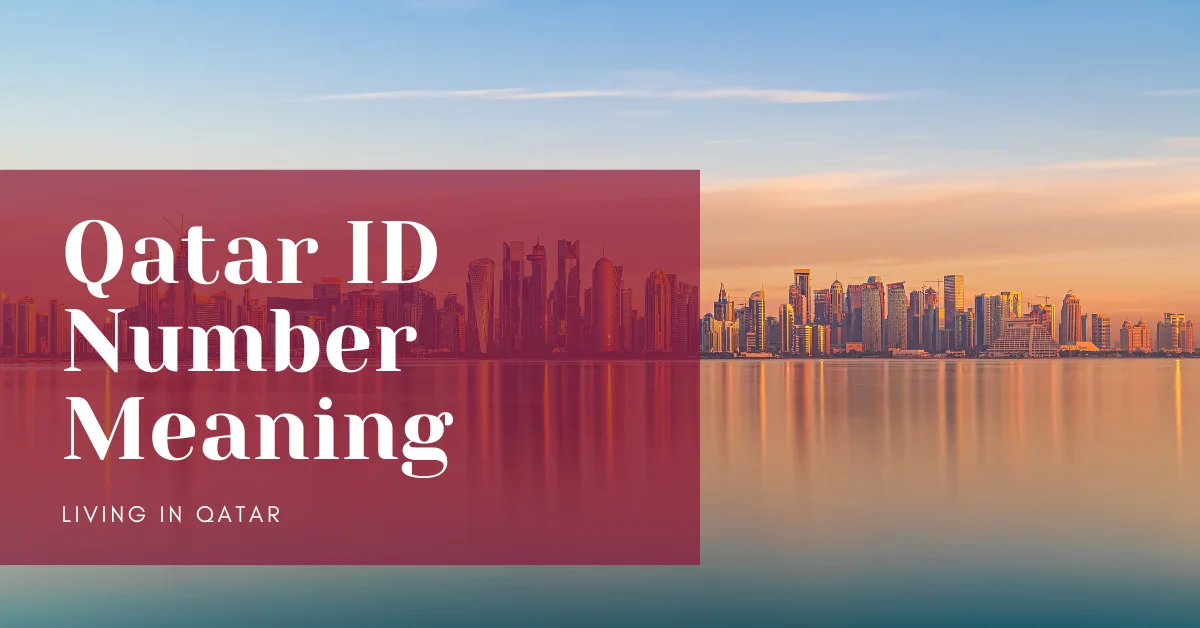Have you ever looked at your Qatar ID card and wondered what those 11 digits actually mean? Your QID number isn’t just a random set of numbers. Each digit serves a specific purpose and contains information about you. This article explains the meaning behind your Qatar ID number, how the system works, and why this identification is so important for life in Qatar.
What is a Qatar ID Number?
A Qatar ID number (QID) is an 11-digit unique identifier assigned to every resident of Qatar, including both Qatari citizens and expatriates. This number appears on your Qatar ID card and serves as your official identification for government services, banking, healthcare, and many other essential activities.
The QID is not randomly generated. Instead, it contains coded information about you, including your birth year and nationality. Understanding the meaning of these numbers helps you verify your personal information is correct on your ID card.
Breaking Down the QID Number Structure
Your Qatar ID number consists of four distinct parts, each with specific meaning:
First Digit: Century Indicator
The first digit of your QID tells which century you were born in:
- 2 means you were born between 1900 and 1999
- 3 means you were born in 2000 or later
Next Two Digits: Year of Birth
The second and third digits represent the last two numbers of your birth year. For example:
- If you were born in 1985, these digits would be “85”
- If you were born in 2001, these digits would be “01”
Middle Three Digits: Nationality Code
The fourth, fifth, and sixth digits show your nationality using the international ISO country code. For example:
- 634 represents Qatar
- 356 represents India
- 840 represents United States
- 826 represents United Kingdom
Last Five Digits: Unique Sequence Number
The final five digits create a unique sequence that ensures no two people share the same QID number, even if they have the same birth year and nationality.
How to Verify Your QID Information?
You can check if your Qatar ID number correctly reflects your personal information by examining these components:
- Look at the first three digits and confirm they match your birth century and year
- Check the middle three digits against your country’s ISO code (list provided below)
- Make sure the entire number matches what appears in your official records
If you find any discrepancy, contact the nearest Ministry of Interior service center for assistance.
Common Country Codes on Qatar ID Cards
Here are some of the most common nationality codes found on Qatar ID cards:
| Country | ISO Code | Country | ISO Code |
| Qatar | 634 | India | 356 |
| Egypt | 818 | Philippines | 608 |
| Pakistan | 586 | United Kingdom | 826 |
| United States | 840 | Saudi Arabia | 682 |
| United Arab Emirates | 784 | Bangladesh | 050 |
| Nepal | 524 | Sri Lanka | 144 |
| Jordan | 400 | Lebanon | 422 |
| Canada | 124 | Australia | 036 |
Importance of Your Qatar ID Number
Your QID number serves several critical purposes in Qatar:
1. Official Identification
The Qatar ID card with its unique number is your primary form of identification for:
- Opening bank accounts
- Renting apartments
- Getting a driving license
- Accessing healthcare services
2. Legal Residency Proof
For expatriates, the QID proves your legal status in Qatar and is required for:
- Work permits
- Visa renewals
- Travel within and outside Qatar
- School enrollment
3. Digital Services Access
Your QID number gives you access to:
- The Hukoomi portal for government e-services
- Online banking
- Telecommunications services
- Digital document signing
4. GCC Travel
For Qatari citizens, the Qatar ID card enables passport-free travel within the Gulf Cooperation Council (GCC) countries, making regional travel more convenient.
5. Healthcare System Integration
The QID links to your health records, allowing:
- Streamlined hospital registration
- Access to medical history for doctors
- Health insurance verification
- Prescription services

Abdullah Hasham is an expat living in Qatar and the founder of Qatar Navigate. Drawing from his own experiences, he creates practical, easy-to-follow guides to help others settle in, explore, and thrive in Qatar. His goal is to make everyday life simpler for fellow expats, residents, and newcomers alike.

